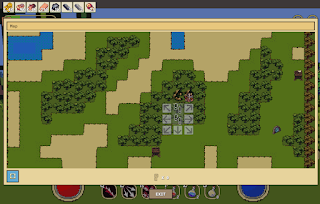Stitching tiles to neighbor tiles at different altitudes.

Suppose you have a 2D tilemap grid of altitudes, and mapped tile types to each coordinate based on the altitude generated. What if you wanted to display this in 3D? With the actual altitude set at each tile with full scale mountains? Recently, I set out to do just that. Initially I just put terrain objects down at the grid coordinates in 3D space, but kept all of the height values the same. This results in an overall flat world. Each individual tile can have a heightmap that adds bumps or hills, but there is no global altitude being applied. So, what if we want to add our global altitude to our tiles? Instead of placing every tile at height 0, lets set it to the altitude generated. As you can imagine, this creates a pretty immediate problem: When a tile is a different altitude than its neighbors, a gap forms between the edges. This is bad for obvious reasons, you don't want players falling off the world in to the abyss of -y coordinates. How do we solve ...
